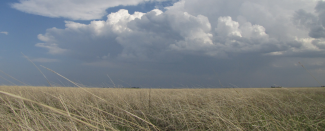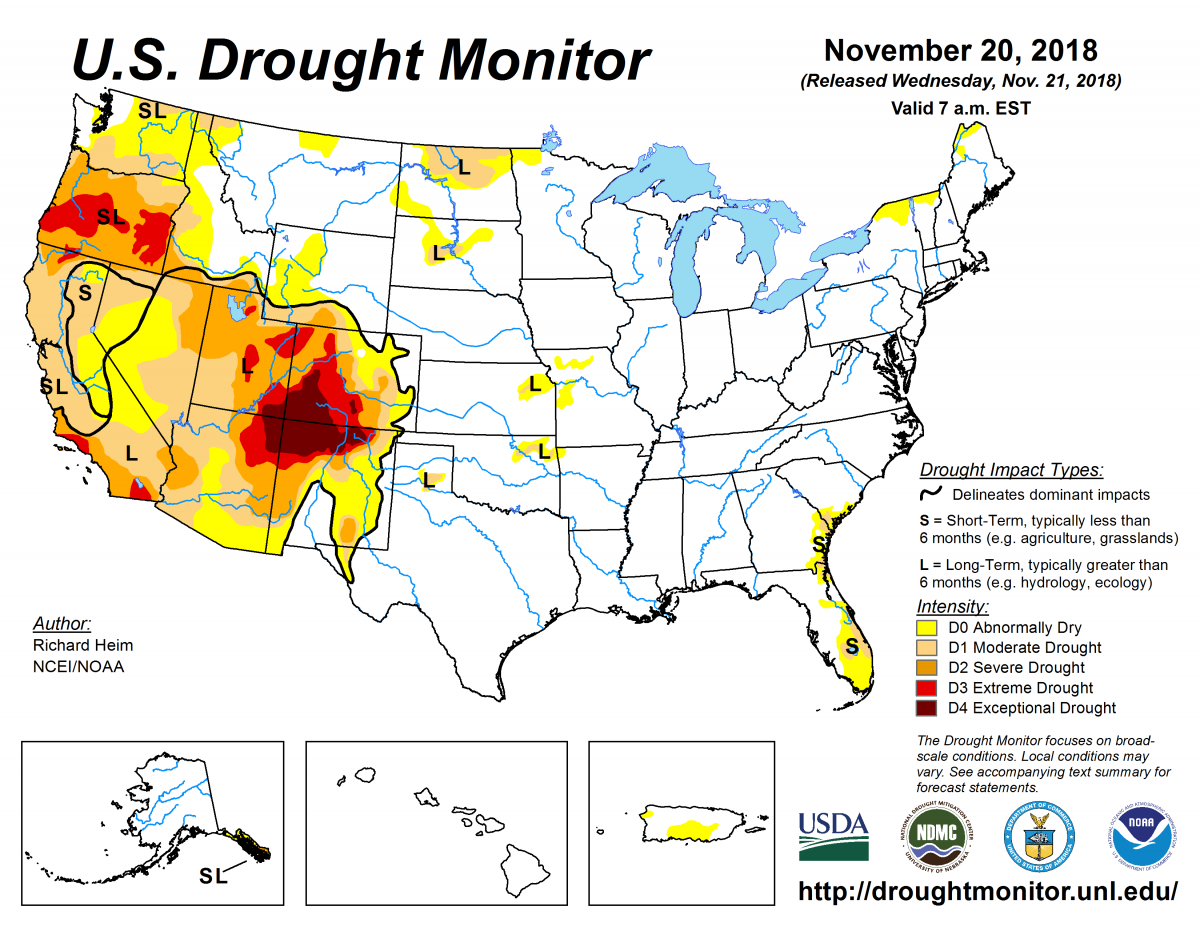
According to the November 20, 2018, U.S. Drought Monitor, moderate to exceptional drought covers 19.1% of the United States, an increase from last week’s 17.9%. Extreme and exceptional drought—the worst categories—cover 3.6% of the United States, the same as last week.
The upper-level circulation during this U.S. Drought Monitor week consisted of a trough over the eastern contiguous United States and a ridge over the West Coast. The trough, with its northwesterly flow, funneled cold and dry Canadian air masses into the central and eastern Lower 48, spreading below-normal temperatures. The cold fronts were fed by Gulf of Mexico and Atlantic moisture when they reached the southern and eastern coasts.
Low-pressure systems tracked along the fronts to generate precipitation, which spread along the Gulf Coast and across much of the country from the Tennessee and Ohio valleys to the East Coast. The precipitation in the East was enhanced by a slow-moving upper-level low early in the week. The western ridge deflected Pacific storm systems away from the western contiguous United States and into southern Canada, making for a very dry week across much of the West.
The ridge also enhanced high surface pressure over the Great Basin, which produced strong Santa Ana winds that fanned devastating wildfires over California. As they tracked around the top of the ridge, some of the Pacific systems combined with the Canadian cold fronts to generate areas of precipitation in Washington, the northern and central Rockies, and a few areas in the northern Plains.
Other than these few areas of precipitation, the Plains to Mississippi Valley were mostly dry. Drought and abnormal dryness contracted in parts of Montana, North Dakota, and the Southwest. They expanded in a few areas and contracted in others in the Southeast. Moderate or extreme drought expanded across a large part of California into Nevada and in parts of the Pacific Northwest.
Abnormal dryness and drought are currently affecting over 78 million people across the United States—about 25.3% of the country’s population.

The full U.S. Drought Monitor weekly update is available from Drought.gov.
In addition to Drought.gov, you can find further information on the current drought as well as on this week’s Drought Monitor update at the National Drought Mitigation Center. See their recent news releases.
The most recent U.S. Drought Outlook is available from NOAA’s Climate Prediction Center and the U.S. Department of Agriculture provides information about the drought’s influence on crops and livestock.
For additional drought information, follow #DroughtMonitor on Facebook and Twitter.



